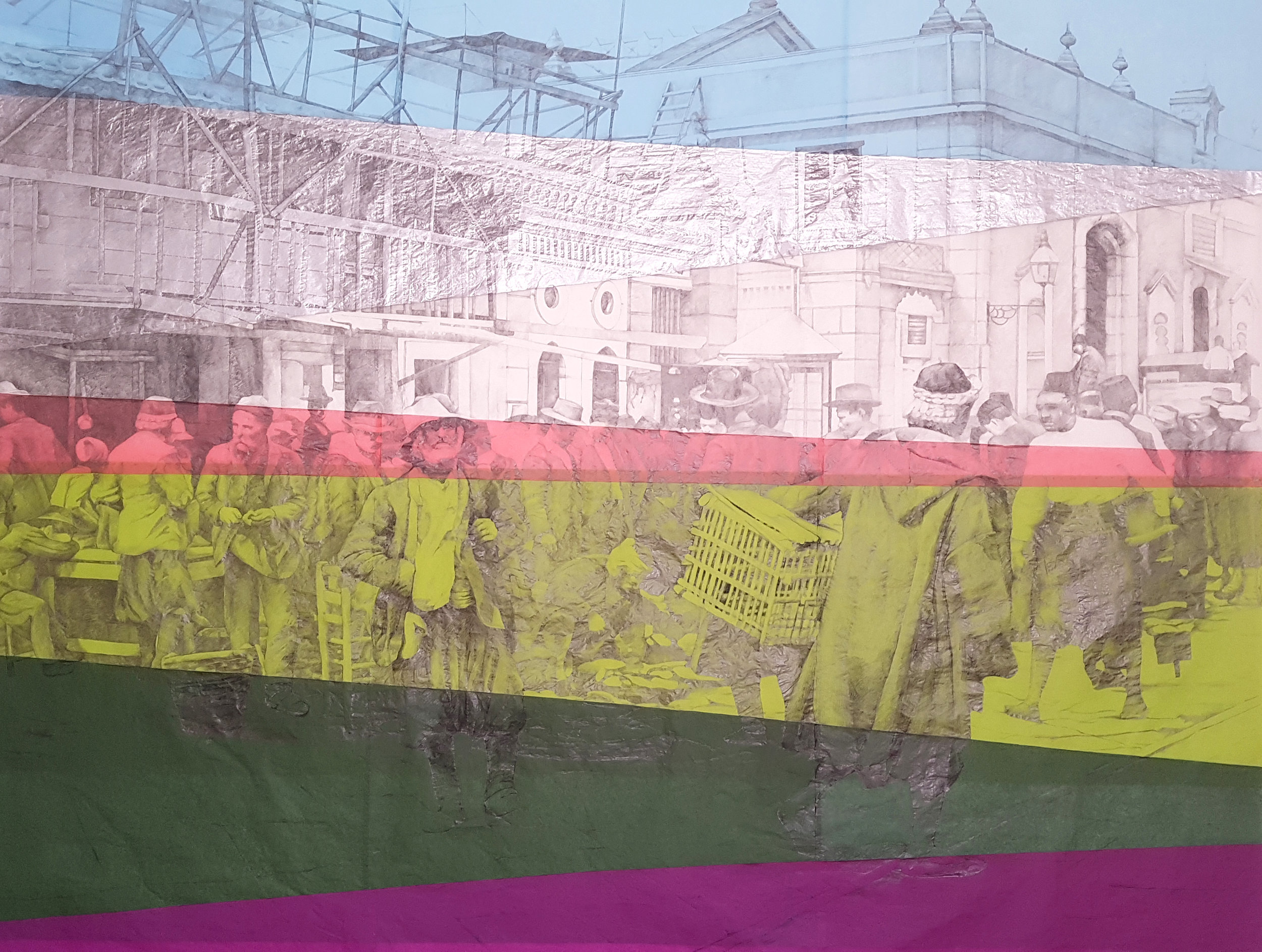Good Printing: an exploration of a medium
Installation view. Good Printing, Gallery Isabelle Van Den Eynde, Alserkal Avenue, Dubai. Courtesy Gallery IVDE
In 1981, when Jean Baudrillard wrote his theory of Simulacra and Simulation, he made a claim that society has replaced all reality and meaning with symbols and signs and that human experience is only a simulation of reality. Any image that we see is no longer a reproduction of something real, only concealing a truth that it does not exist.
It is these theories that spring to mind when walking around Good Printing, the summer group exhibition at Gallery Isabelle Van Den Eynde, Dubai.
The artists explore the process of printmaking and the potentials of the technology of reproduction. However, there are no hanging prints nor are there works on paper framed neatly on the wall. Instead, there are a collection of works that draw inspiration from their ephemeral sister – performance art.
Yasmina Reggad, the show’s curator has a background in performance art and many of the pieces attempt to crystallise performance gestures into objects. In that sense, they are not Baudrillardian by nature - as Reggad points out: “Although they pretend to be or ‘simulate’ the documentation of a performance or performed gestures, they remain original and were intended to be original artwork - that are actually reproducible mechanically,” she says.
In Reggad’s statement, she quotes Walter Benjamin, a philosopher whose theories, she says, are still very much stimulating and accessible and whose questions on authority and how much an object of art retains its original aura once it is reproduced, clearly underpin her curation.
“And in permitting the reproduction to meet the beholder or listener in his own particular situation, it reactivates the object reproduced. ”
Rania Belou, Be Your Freedom and Build Your Own Kingdom, 2017. Pencil on colour tissue paper, 170 x 216 cm. Image courtesy of Gallery Isabelle Van Den Eynde
However, when looking at Rania Belou’s delicate pencil drawings on tissue paper, that are reproductions of archival photographs one can’t help but take a tangent onto Baudrillard’s thinking and ponder on the fact that such photographs do exist but are fading into non-existence.
Also, when encountering :mentalKLINIK’s Lazy Works 1701 - consisting of sticky page markers stuck onto index card to resemble printed matter, its simple structure reveals only where the markers are misaligned and so, highlight the near impossibility of trying to produce identical objects again and again.
I would argue that although this exhibition has purportedly simple intentions, it actually opens up an interesting debate. Once something becomes an image of an image, is it then a simulacra (Baudrillard) or a mechanical reproduction (Benjamin)?
:mentalKLINIK LAZY WORKS 1701, 2017. Sticky page markers (foil transparent) on squared index card 10 x 15 cm. Image courtesy of Gallery Isabelle Van Den Eynde
Whilst Reggad, welcomes such interpretation, she says she had no such agenda in mind. “My genuine intention was to put together a playful and unpretentious yet clever and stimulating show for the audience,” she says. “I believe it offers many entries to access the work of each artist individually as well as in dialogue with one another. I really wanted to highlight original artist processes in regard to the medium of printing as well as the rich contemporary discourses and inquires that shows the porosity in the assumption of a medium’s specificity.”
Two other highlights in the show (firmly in the Benjamin camp) are pieces from William Engelen’s Falten [Folds] and Ilan Manouach’s Shapereader. Engelen, a Dutch artist based in Berlin, has fashioned musical compositions from folded paper. In every piece he has mapped out a timeline where each centimetre of paper corresponds to one second in the score. In the final product, the creases and lines give an architectural structure to music and we see a form that the music has never taken before. They are poetic and a fascinating way to visualise the intangible art of music.
Manouach’s panels consist of stamped imprints from ridged and tactile stamps that make communicative marks once imprinted in ink on paper - like Braille. He allows his audience to make marks for the final products and so, the works form a constructed language that questions the nature of artistic control.
llan Manouach, Shapereader METOPE, 2017. Set of 7 acrylic panels, 50 x 50 x 0.8 cm each. Image courtesy of Gallery Isabelle Van Den Eynde
- Good Printing ran at Gallery Isabelle Van Den Eynde, Alserkal Avenue, Dubai from May 22 - August 19, 2017




